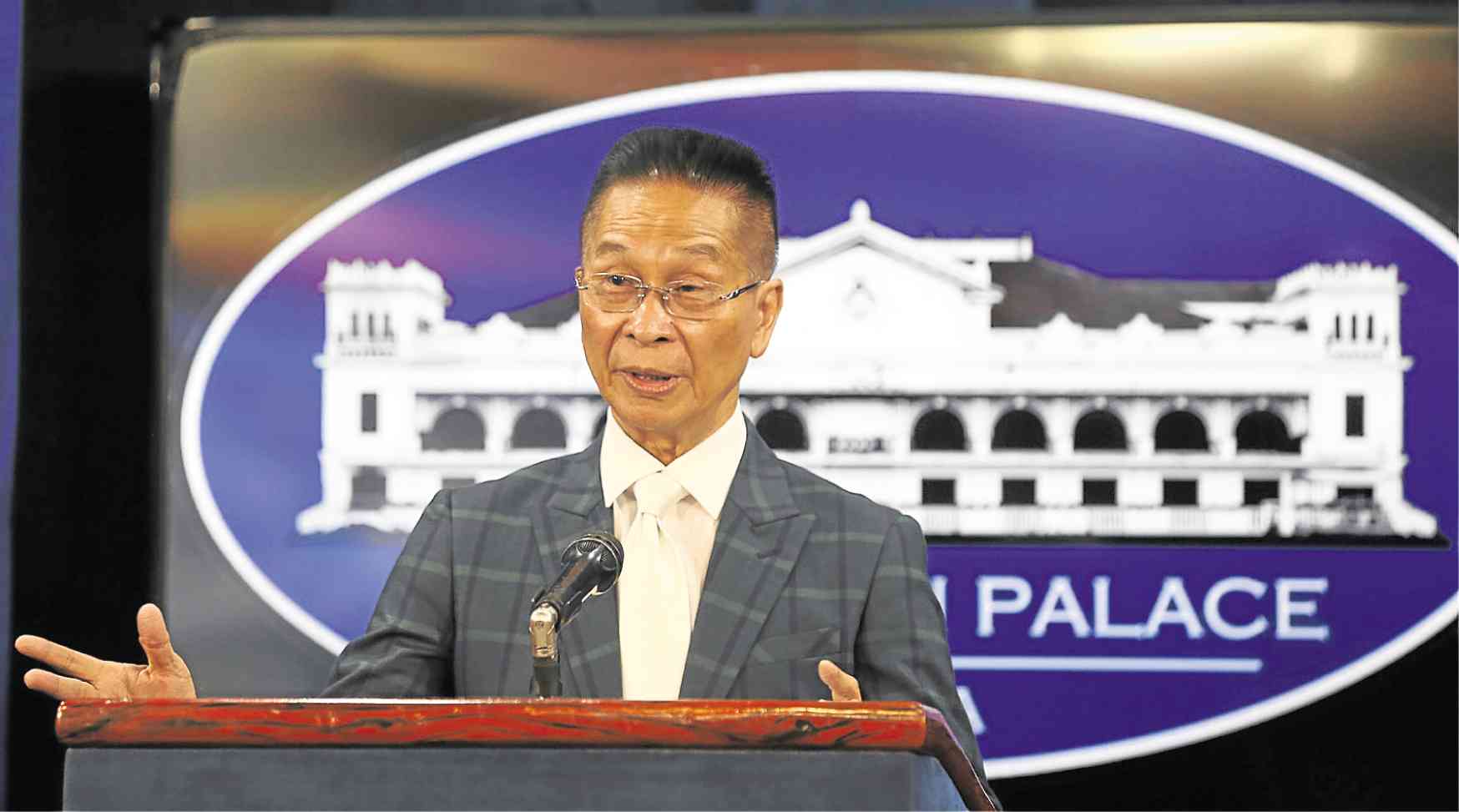Malacañang: Study rearrest of freed heinous crime convicts
MANILA, Philippines — Malacañang has tasked the Department of Justice (DOJ) to study the possible rearrest of heinous crime convicts who were released before fully serving their sentences supposedly due to good conduct time allowance (GCTA) under a 2013 law.
In a statement, President Rodrigo Duterte’s spokesperson and legal adviser Salvador Panelo said a 1967 Supreme Court ruling, which ordered the rearrest of a person who was erroneously released by a jail warden based on good behavior, “may be a good legal basis” for rearresting those freed.
He noted that Article 99 of the Revised Penal Code provided that “the irrevocability of the grant of GCTA is premised on the grant having a lawful justification.”
“Without a lawful justification, therefore, the said grant is void and the person who benefited from it may not invoke its irrevocability hence can be incarcerated to continue his or her sentence,” said Panelo.
Año: Warrants not required
Article continues after this advertisementPanelo has repeatedly said those convicted of heinous crimes were not qualified under the good conduct law, or Republic Act No. 10592.
Article continues after this advertisementAsked whether the rearrest would require warrants, Panelo said: “Whatever the secretary of justice will do on this matter, we will leave it to him.”
Interior Secretary Eduardo Año, however, said warrants were not required for those erroneously freed “because if their (freedom) was canceled, they become fugitives, and fugitives are actually wanted people and the standing warrants for them remain.”
Panelo said the President would not tolerate any abuse of the benefits of the GCTA, calling RA 10592 “a legislative measure which appeared ambiguous at first glance to its enforcers.”
The President “will ensure that the practice initiated by the past administration on the granting of GCTA will no longer continue,” he said.
The Bureau of Corrections (BuCor) said 1,914 heinous crime convicts were among more than 22,000 prisoners freed from state penitentiaries since 2014.
Retroactive application
Panelo said the implementing rules and regulations (IRR), crafted by then Justice Secretary Leila de Lima and Interior Secretary Mar Roxas, “included those convicted of heinous crimes as qualified to avail the benefits of RA 10592.”
He attributed the sudden increase in the number of prisoners eligible for GCTA to the retroactive application of the law as directed by a Supreme Court ruling.
“We stress that the granting of GCTA is not a form of executive clemency, the awarding of which belongs to the Office of the President. The buck in this case stops with the BuCor (Bureau of Corrections),” he said.
Año agreed there were many “gray areas” in the manual to apply the good conduct law and in its IRR.
He noted that the BuCor chief could compute good conduct allowance but that “there must be a higher authority who will approve the release [of a convict].”
He said the released heinous crime convicts, including convicted drug lords and heads of Chinese drug syndicates, should be returned to jail. “We can see that the computation of their sentences was not done right. If we made a mistake, it should be corrected,” Año said.
“We have to check who are these [convicts of] heinous crimes. If they are serial killers, that is really dangerous for us,” he added.
Justice Secretary Menardo Guevarra has suspended the implementation of the good conduct law pending a review of the IRR by a joint committee of the DOJ and the Department of the Interior and Local Government. —With reports from Jeannette I. Andrade and Cathrine Gonzales
